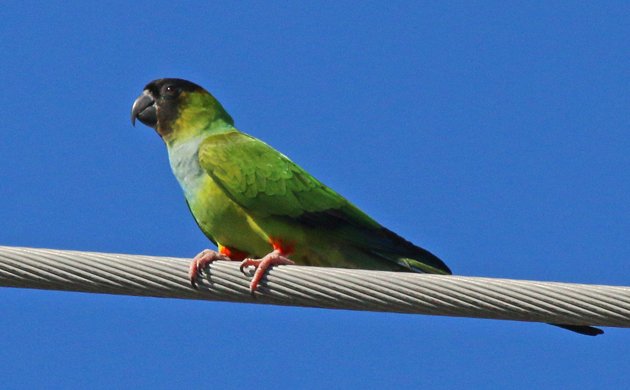
On my first day in Florida for the Space Coast Birding and Wildlife Festival I landed at Orlando International Airport at about 9 AM, deplaned, waited for my luggage, got my rental car, and drove west. Wait, west? Observant readers who are familiar both with the geography of Florida and the location of the Space Coast Birding and Wildlife Festival know that the festival is in Titusville, which is east of Orlando. Then why was I driving west?
The answer? Two out-of-place parrots and a lost shorebird. Sadly, none of the dwindling population of introduced Budgerigars showed themselves to me and the vagrant Bar-tailed Godwit was a second dip. I was bummed out but still hopeful that one of my three target species would show itself. That’s right, the salvation of my birding day relied upon me laying eyes on a Nanday Parakeet.
The Nanday Parakeet, native to South America, was first observed in Florida in 1973. It took until 2004 before the Florida Ornithological Society’s Records Committee added the bird to the state checklist as a countable species and it took the American Birding Association’s Checklist Committee until 2012 to agree and make it a countable bird in the ABA area. They are quite charming parrots, mostly green with a black facial mask and beak, red feathers around the thighs, a bluish tint to the chest, and blue edging the tail. They are relatively easy to find around St. Petersburg, which is where I was headed after dipping the Bar-tailed Godwit north of Tampa.
I never got to St. Petersburg. Instead, as I slowed for a red light I heard a parrot’s squawk through my open car window. I quickly jumped two lanes of traffic to my left, pulled into a Red Lobster parking lot, and was treated to two Nanday Parakeets perched on an overhead wire! Sweet! They were very friendly with each other.
In the first minute I watched them they allopreened and one fed the other. I was pretty sure they were both adults so I had to assume they were a couple. My suspicions were confirmed when I watched them mate, though the mating process was the most bizarre I had ever seen in birds. They basically backed into each other and their tails went up together while their heads ended up pointing down. Having only heard of or seen birds mating in the traditional male-on-top-of-the-female I was confused. But, what do I know of introduced parrot species? Besides, how much thinking did I want to do when I had such a great digiscoping opportunity?
Nanday Parakeets allopreening (Click it to make it bigger.)
Nanday Parakeets attempting to mate
Nanday Parakeets cuddling together (Click it to make it bigger.)
Once the birds flew away and I started the long drive east to Titusville I started thinking about what I had seen. But I couldn’t make any sense of it. What to do, what to do? Well, I had a cell phone with the number of one Julie Zickefoose in it. If anyone could help me figure out what I had seen it would be Julie! Awesomely, she picked up, surprised that her cell had gotten enough of a signal in Whipple, Ohio, that my call came through. I explained why I was calling and she solved the mystery with one word. Lesbians! Both birds must have been females which would explain why both of them were presenting and neither was getting on top. I knew Julie would have a good theory as to what was going on with the birds! (Edited to add that Julie said this was one possible explanation.)
Of course, same-sex pairings in birds are not terribly surprising. After all, on this very blog I have pointed out that being gay is good for birds and Dale wrote about same-sex relationships he observed in Scarlet Macaws. But it is something else entirely when you actually witness behavior that you only knew about theoretically. Sure, I had set out to see three life birds and had seen just one but that one was doing something that I had never before witnessed. And that’s pretty cool.
Even if the idea that this is a same-sex couple is correct there are a host of questions still unanswered. Why are these particular birds in a same-sex relationship? Are they not fully sexually mature? Have they been unable to find male mates? Are they siblings? Are they innately attracted to birds of the same sex? Will they eventually break up and find male mates? I have no idea what the answers are but it sure is cool to think about such things.
two Nanday Parakeets attempting to mate
…
10,000 Birds is a Scrub Jay level sponsor of the 17th Annual Space Coast Birding and Wildlife Festival.
…


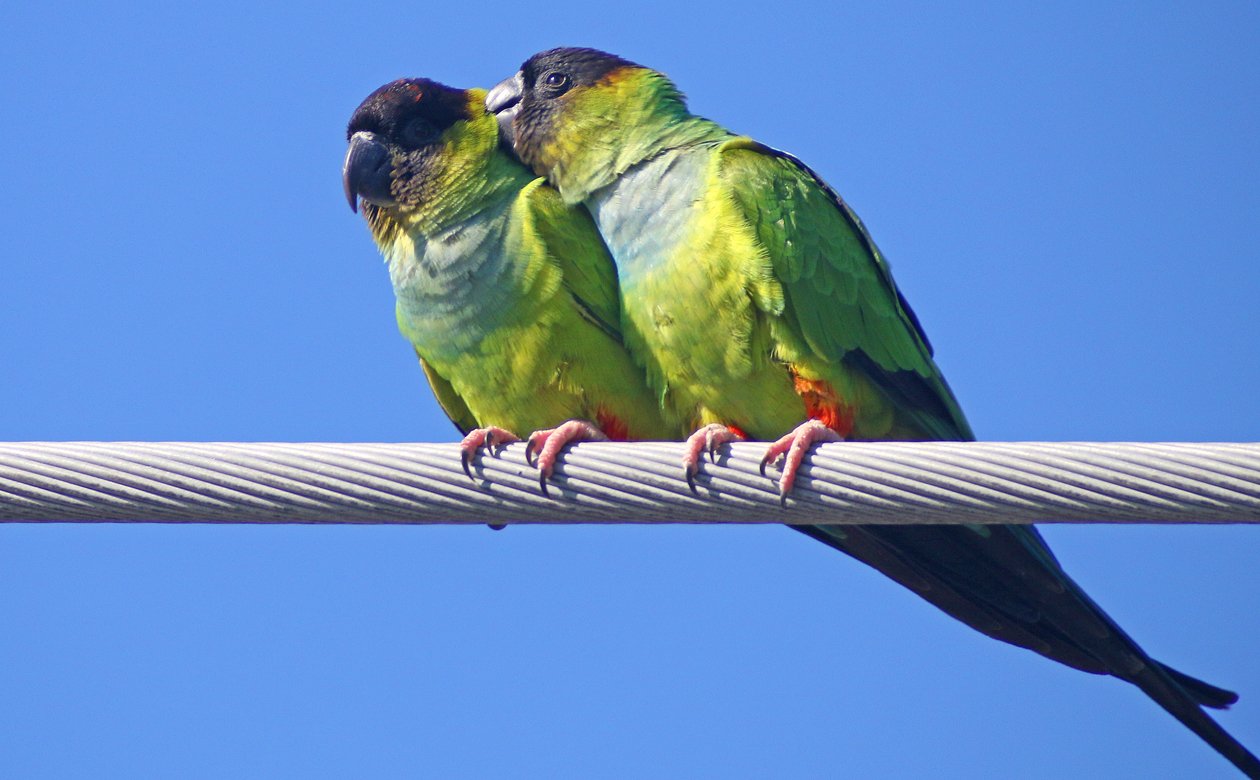
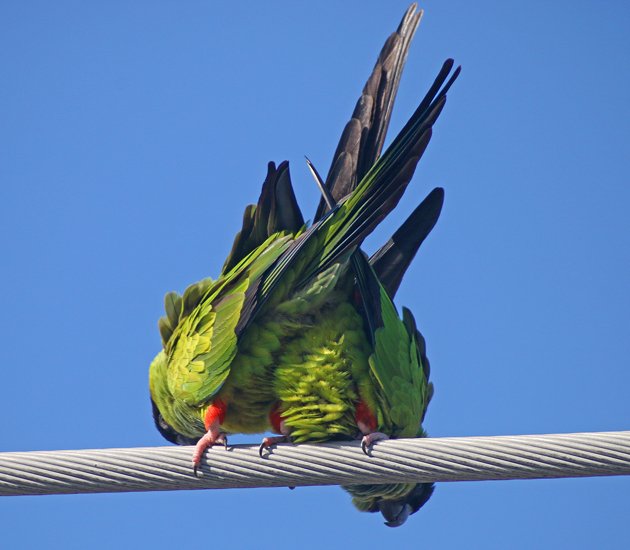
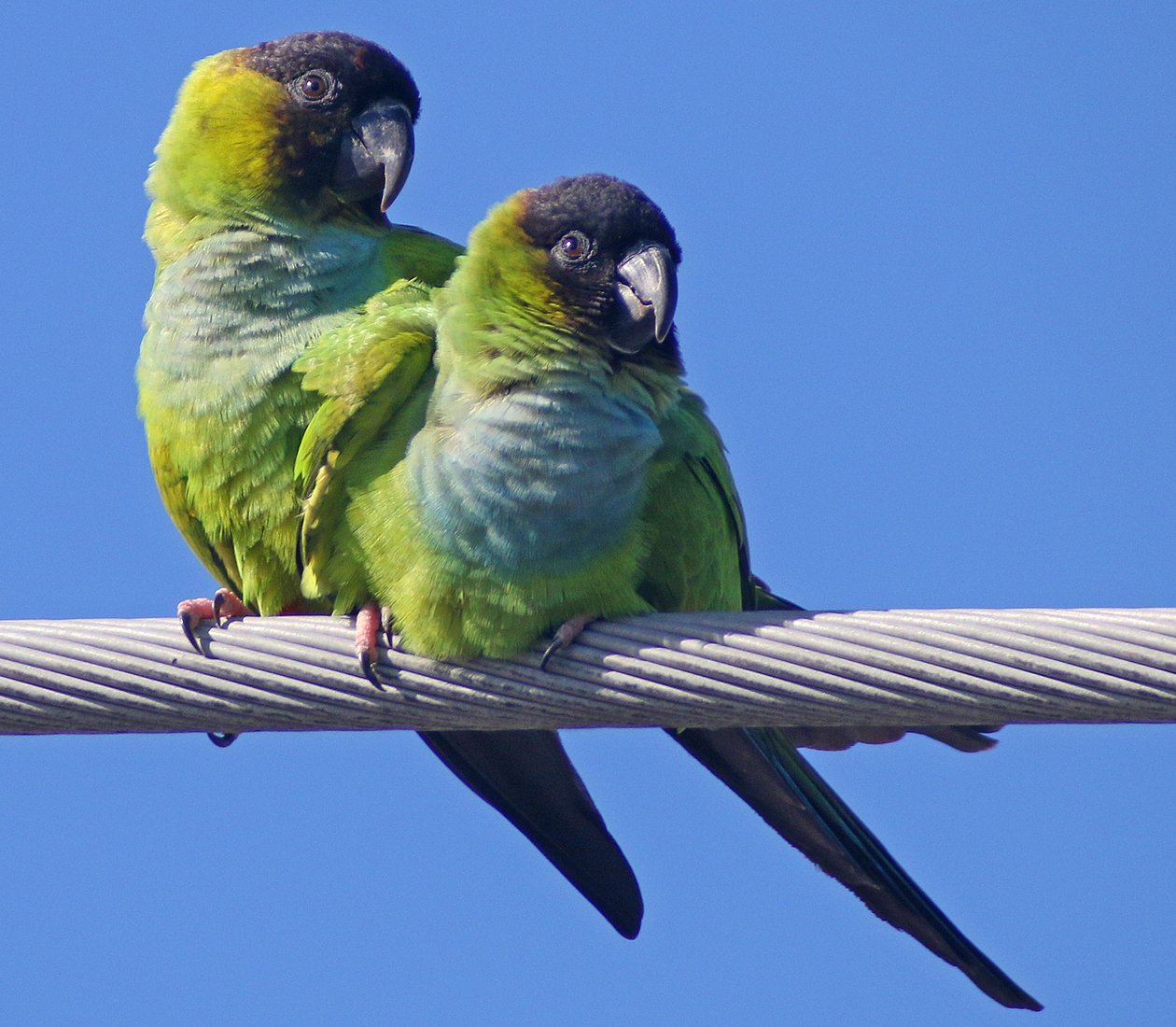
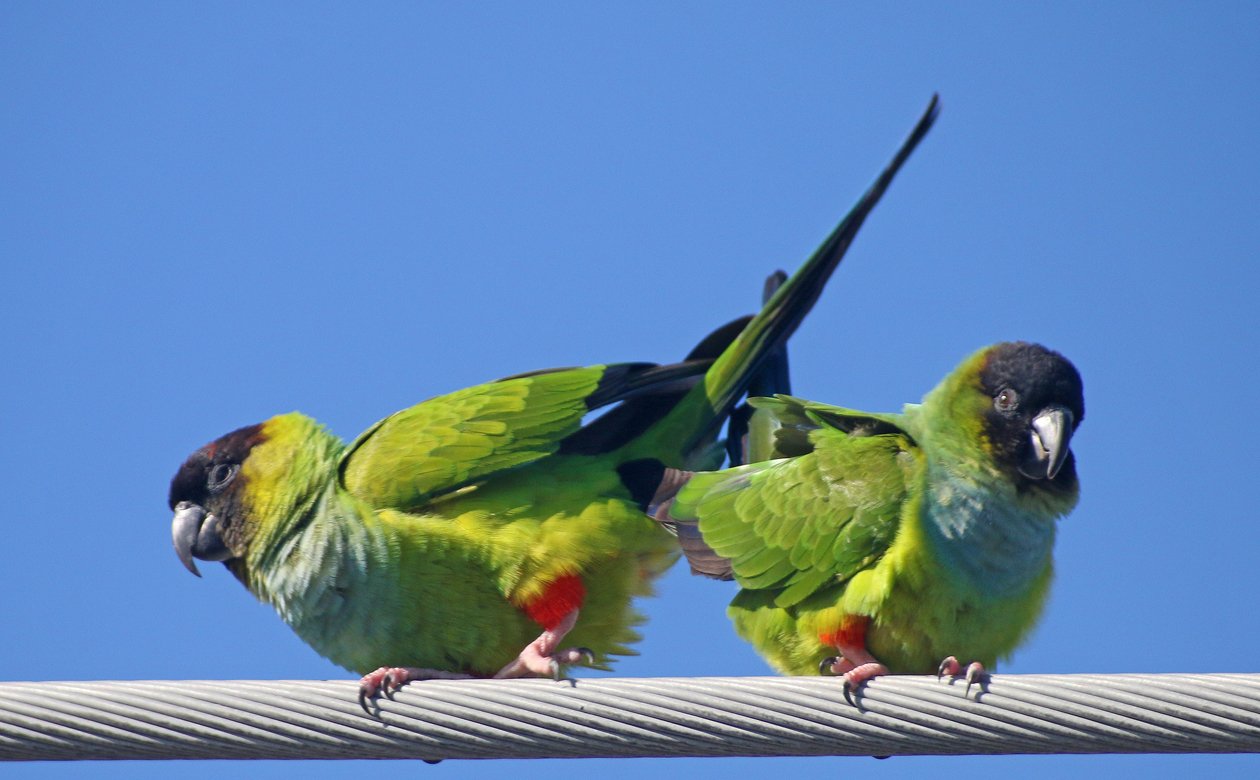











Corey, maybe they were just horny!
I’ve done a fair share of field research of wild Red-masked parakeets including nine-months (over a thousands hours) of radio telemetry of radio-collared Red-masked parakeets, as well as years of field studies of several other parrot species. I’ve seen most iterations of wild (Aratinga parakeet) copulation. Though same sex allopreening and “cuddling” can’t be entirely ruled out here, there is no reason not to believe it was not a male-female pair either. Male-female Aratinga parakeet copulation does not usually involve the male “mounting” the female. Copulation typically involves the male only placing one foot on the female’s back and gripping the perch with the other. Sometimes both birds back into one another in foreplay as your photo shows. A lot of “erotic” behaviors are common in first time breeders or young pairs in my experience but can occur in any male-female pairs, even year round but usually in the few months associated with pair formation and/or nest hollow discovery and preparation. In short, what you saw is perfectly normal behavior for male-female pairs of Aratinga and some other parrot species. The only way to tell if these were two female birds is if they both laid eggs or if one obtained blood samples for gender karyotyping.
Check out this gallery for a male-female pair copulation of Red-masked parakeets.
http://neotropical.birds.cornell.edu/portal/species/gallery?p_p_spp=186136
Nicholas, thanks for weighing in. I’ve edited the post to make it more clear that the same-sex aspect of this is theoretical. (And the original title does have a question mark in it.)
I’ll also add that they did the backing-into-each-other thing three times, each time ending up with their heads way down below the wire and their tails sticking straight up. Whatever was going on here, it was fascinating to watch.
Wonderful photos of a bird that is not as appreciated as it could be in Florida. An interesting discussion of behaviors as well.
We give long term care to Monk Parakeets who have medical issues and they do the side by side mating as well. They also tend to ‘love the one your with’, and are very good at entertaining themselves, if you know what I mean.